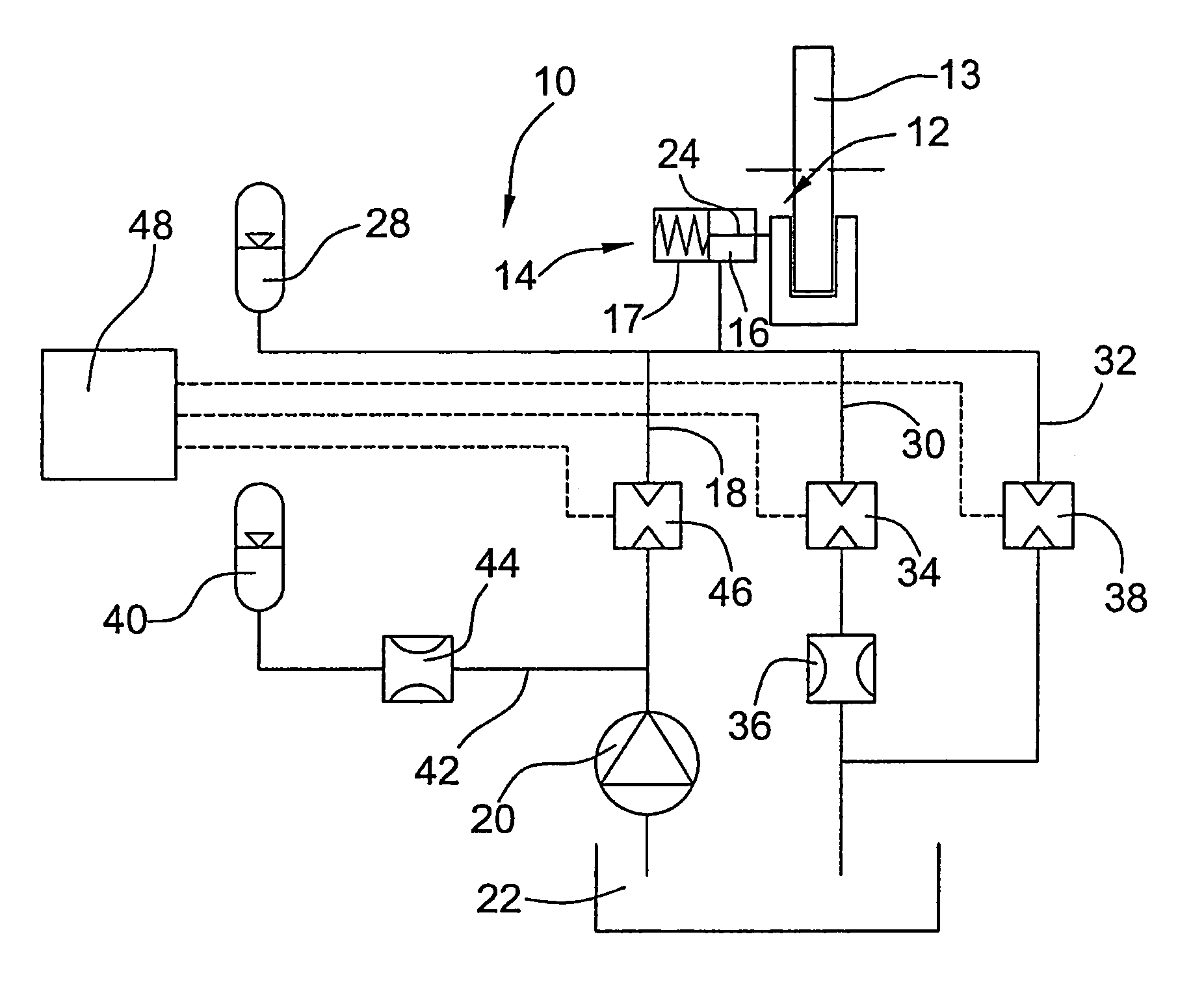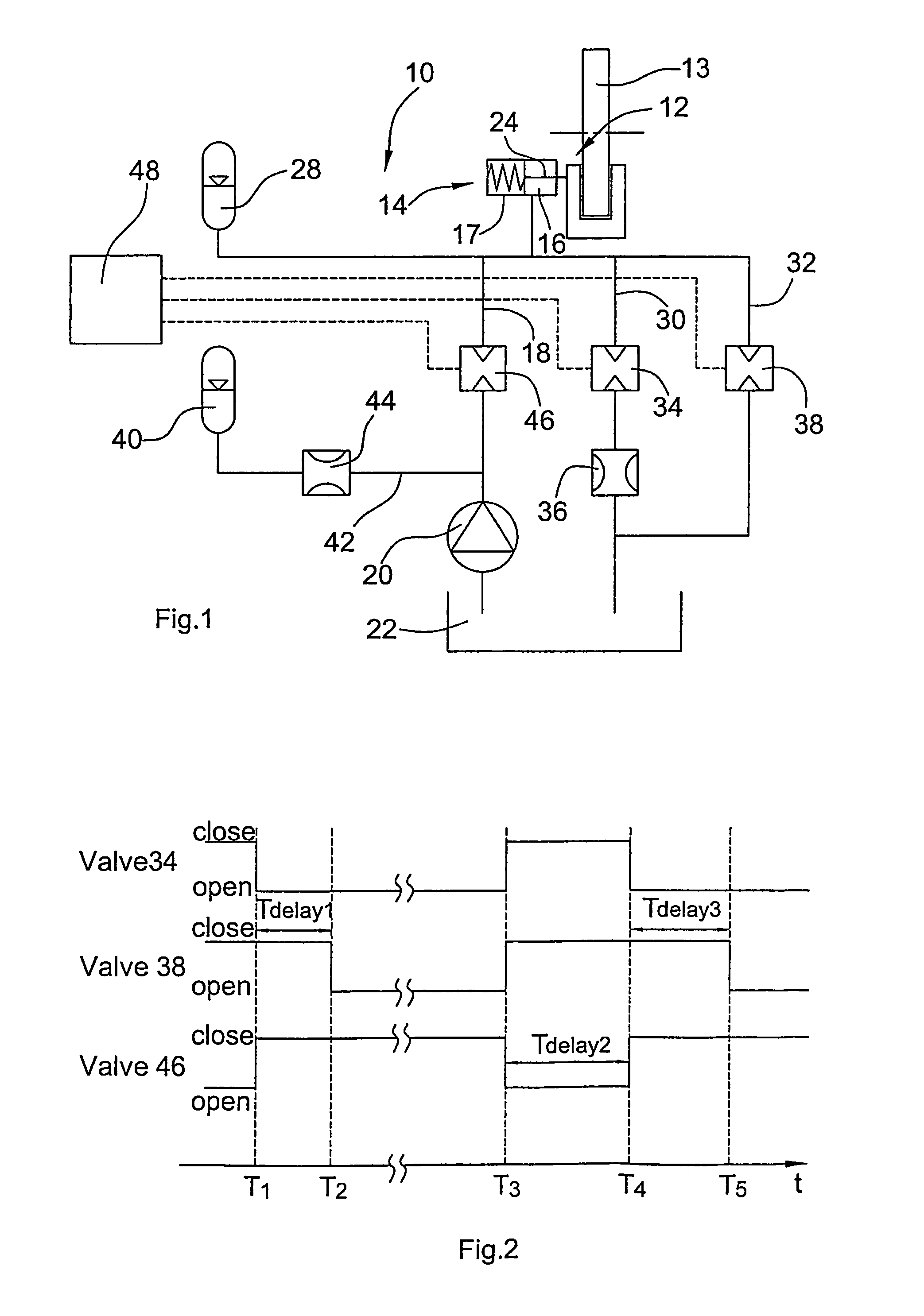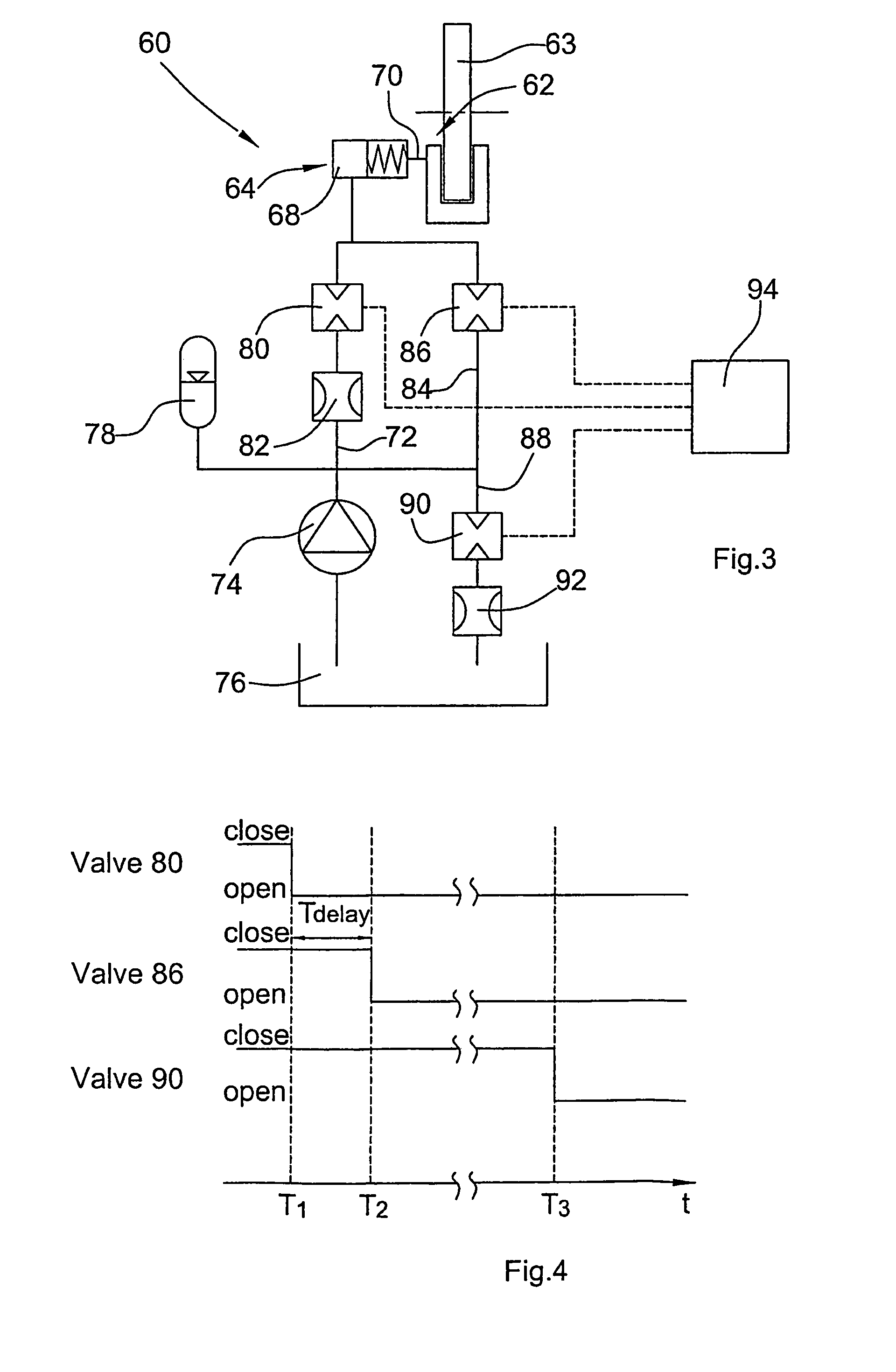Hydraulic brake system for a wind energy plant
a technology of wind energy plants and hydraulic brakes, which is applied in the direction of braking systems, machines/engines, transportation and packaging, etc., can solve the problems of excessive dynamic load peaks in the system to be braking, system damage, and large vibrations, and achieve reliable braking of components and simple configuration.
- Summary
- Abstract
- Description
- Claims
- Application Information
AI Technical Summary
Benefits of technology
Problems solved by technology
Method used
Image
Examples
Embodiment Construction
[0064]FIGS. 1 and 2 relate to a first embodiment of a hydraulic brake system 10. System 10 comprises a passive brake 12 for a—in this case, rotating—component 13 (e.g. brake disk on the rotor shaft of a wind energy plant) with one or a plurality of piston / cylinder units 14. The working volumes 16 of the cylinders 17 of the piston / cylinder unit 14 are supplied with pressurized working fluid from a reservoir 22 via a supply line 18 by means of a pump 20. The piston 24 of each piston / cylinder unit 14 is biased, e.g. by means of a spring 26, into the braking position actuating the brake 12, and can be moved against the biasing force into a release position by pumping working fluid into the working volume. Connected to the working volume 16 is a first storage means 28 storing such a quantity of pressurized working fluid that the overall volume of the brake piston and the storage means will always be sufficient to close the brake 12.
[0065]Connected to the working volume 16 of each piston / ...
PUM
 Login to View More
Login to View More Abstract
Description
Claims
Application Information
 Login to View More
Login to View More - R&D
- Intellectual Property
- Life Sciences
- Materials
- Tech Scout
- Unparalleled Data Quality
- Higher Quality Content
- 60% Fewer Hallucinations
Browse by: Latest US Patents, China's latest patents, Technical Efficacy Thesaurus, Application Domain, Technology Topic, Popular Technical Reports.
© 2025 PatSnap. All rights reserved.Legal|Privacy policy|Modern Slavery Act Transparency Statement|Sitemap|About US| Contact US: help@patsnap.com



